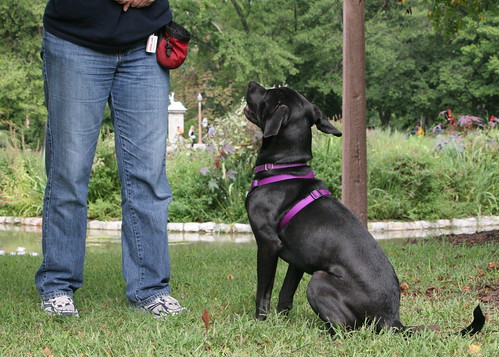By Michael:
On Sept. 11, 2001, the terrorist attack on the Twin Towers made Americans realize terrorism can happen anywhere. This realization and the continued terror threats have many preparing for the worst. If you have to evacuate your home and head into the wilderness, could you and your dog survive? According to the Humane Society of the United States, almost 50 percent of households have at least one dog. Many dogs can be helpful if families are forced to live without modern comforts.
Your dog can:
- Help you stay warm
- Assist you while you hunt
- Offer some form of security
Prepare Today

Teach him how to survive in emergencies. Should the unthinkable happen, training him for survival makes him more than a mere companion, he becomes a useful tool. Training him to help in an emergency is no different from training him to use a doggie door. All it takes is dedication and consistency. Don’t rush the process, and you should be successful.
Training Tips
- Use his first name and then give him the command in a low, firm voice.
- Have your dog stand on your left side during training. Doing so keeps him in a consistent position, which allows you to know if he is lagging behind or moving ahead. Correcting your dog is easier from the side as well.
- Praise him when he stands in the correct position, do this even if you place him there.
- Never repeat a command more than twice.
- Choose a release command. This command could be a tap on his side while you say ‘free’ or OK.
Training for Survival

A dog can usually sense when there is danger and makes it clear when he barks at the threat. Training your dog to be quiet or to speak could mean life or death following a terrorist attack. For example, a dog’s hearing is more sensitive than a human’s is — up to 500 times better, actually, according to wonews.com. That means if rubble traps you, he may still be able to hear you and you can possibly command him to alert others. Teaching him when to speak and when to be quiet is just one way you can possibly prepare to survive an attack.
Speak
- Knock on the door and as your dog barks, say ‘speak’ in a firm voice.
- When he barks, promptly give him a treat and praise him excitedly.
- Repeat this process for about five minutes.
Once he learns the ‘speak’ command, teach him the ‘quiet’ command. Start with ‘speak’ and transition into ‘quiet.’
Quiet
- After he barks several times, gently tug his leash and say ‘quiet.’
- When he stops barking, give him three treats one after the other (this teaches him that being quiet has a higher treat value).
- Repeat this procedure four times in a row.
- Praise him.
In time, you should be able to remove his leash. As he progresses, quit giving him the treat when he speaks and only give him one for the quiet command.
About the Author: Michael is a Southwest native and a pastor. He recently started a local soup kitchen and shelter as a charity project for his church.









4 comments
Skip to comment form
awesome article. would like to see more info on training your dog for other survival situations, how to bug out, etc. thanks for the info
The training techniques are good ones, I would recommend also teaching hand signals, as well. Make a specific gesture as you repeat the command several times, followed by rewards. After they are following the command properly, I will intermittently only use the hand signal, followed by praise and reward. After doing this for a while (it will vary from dog to dog) They will react to the hand signal without verbal command. i especially like doing this with dogs I have trainied for hunting.
Author
My GSD has gotten used to some hand signals but really does better responding to my voice and/or sounds. He probably needs more training but I need to find the right place to help me out.
I use both hand signals and short one word commands. If my dog ever goes deaf ,we’re still OK. If they are bothersome when company is in the house I can give them a hand signal and they get the message without interrupting the visit. Be consistent, just like with your kids.
There is a group of cloister monks out of Canada that breed and train GSD for police departments, service dogs.. They wrote a book detailing their training methods.Of course I lent the book out and it didn’t come back. I want to think it was written back in the 70’s. I picked up some good tid bits just from reading the book.